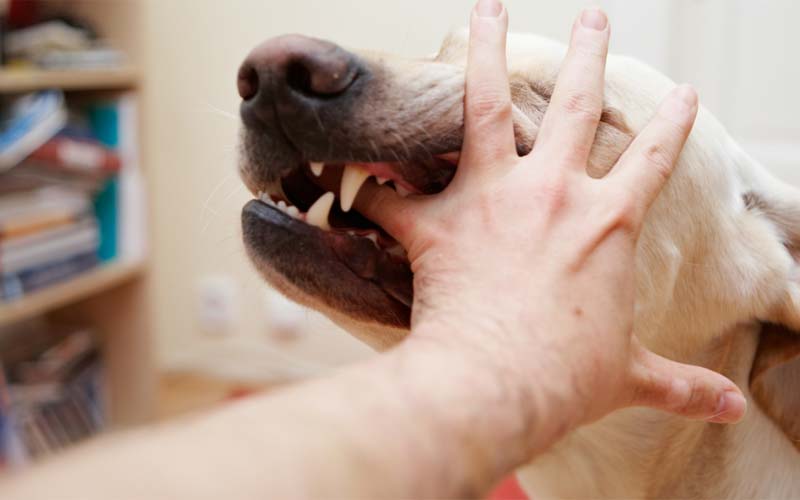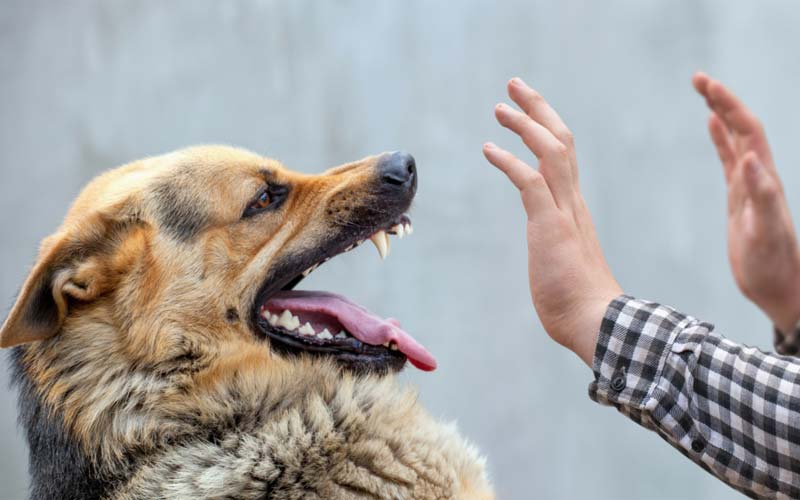Worried your pup might nip at the vet? Learn effective tips to calm your dog and ensure a smooth vet visit for both of you.

1. Understanding Why Dogs Bite at the Vet
Dogs may bite at the vet for various reasons, but the most common ones are fear, pain, and unfamiliarity.
1.1 Fear and Anxiety
Many dogs experience fear and anxiety when they visit the vet. They may associate the vet with negative memories, such as being poked, prodded, or restrained. They may also sense the stress of other animals and people in the clinic. Fearful dogs may show signs of aggression, such as growling, snarling, or snapping, to protect themselves or their owners from a perceived threat.
1.2 Pain and Discomfort
Some dogs may bite at the vet because they are in pain or discomfort. They may have an injury, illness, or chronic condition that makes them sensitive to touch or movement. They may also react to the pain caused by certain procedures, such as injections, blood draws, or nail trims. Painful dogs may bite out of reflex or to communicate their distress.
1.3 Unfamiliar Environment
Another reason why dogs may bite at the vet is that they are in an unfamiliar environment. They may not recognize the vet, the staff, or the equipment. They may also feel overwhelmed by the sights, sounds, and smells of the clinic. Unfamiliar dogs may bite to assert their dominance, to mark their territory, or to escape from a scary situation.
2. Preparing Your Dog for a Vet Visit
The best way to prevent your dog from biting at the vet is to prepare them for the visit beforehand. Here are some steps you can take to make your dog more comfortable and confident at the vet.
2.1 Get Your Dog Used to Handling
One of the most important things you can do is to get your dog used to being handled by different people and in different ways. You can start by gently touching your dog’s ears, mouth, paws, tail, and belly at home. Reward your dog with praise, treats, or toys for allowing you to touch them. Gradually increase the duration and intensity of the touch, and introduce different tools, such as a brush, a comb, or a clipper. You can also ask your friends or family members to handle your dog in a similar way, so that your dog learns to trust strangers.

2.2 Positive Reinforcement Training
Another thing you can do is to train your dog to associate the vet with positive experiences. You can do this by using positive reinforcement, which means rewarding your dog for doing something you want them to do. For example, you can teach your dog to sit, stay, or lie down on command, and reward them with a treat or a toy. You can also teach your dog to wear a muzzle, a harness, or a leash, and reward them for being calm and cooperative. You can practice these skills at home, and then at the vet’s parking lot, lobby, or exam room, depending on your dog’s comfort level.
2.3 Communicate with Your Vet
A third thing you can do is to communicate with your vet before and during the visit. You can tell your vet about your dog’s personality, behavior, and medical history. You can also ask your vet about the procedures, the risks, and the alternatives. You can request a quiet or separate area for your dog, or a specific vet or staff member that your dog likes. You can also ask your vet for advice on how to calm your dog, such as using pheromones, supplements, or medications.
3. Calming Techniques During the Visit
Even if you prepare your dog for the vet visit, they may still feel nervous or stressed during the actual appointment. Here are some calming techniques you can use to help your dog relax and cope.
3.1 Muzzle Training (Optional)
Some dogs may benefit from wearing a muzzle during the vet visit, especially if they have a history of biting or aggression. A muzzle can prevent your dog from injuring themselves, the vet, or you. However, a muzzle should not be used as a punishment or a restraint. It should be used as a safety measure and a training tool. You should train your dog to wear a muzzle at home, using positive reinforcement and gradual exposure. You should also choose a muzzle that fits your dog well, allows them to breathe, pant, and drink, and does not cause them discomfort or pain.

3.2 Distraction Techniques
Another technique you can use is to distract your dog from the stressful stimuli at the vet. You can do this by giving your dog something to focus on, such as a toy, a treat, or a game. You can also talk to your dog in a soothing voice, or play some calming music or sounds. You can also use your body language and posture to signal to your dog that you are relaxed and confident, and that there is nothing to worry about.
3.3 Maintaining a Calm Demeanor
A final technique you can use is to maintain a calm demeanor yourself. Your dog can sense your emotions and mood, and they may mirror them. If you are anxious, nervous, or angry, your dog may become more agitated or aggressive. If you are calm, composed, and positive, your dog may become more relaxed and cooperative. You can control your breathing, your tone of voice, and your facial expressions. You can also avoid making sudden movements, loud noises, or eye contact with your dog. You can also praise your dog for being brave and behaving well.
Conclusion
Dogs may bite at the vet for various reasons, such as fear, pain, or unfamiliarity. However, you can prevent your dog from biting at the vet by preparing them for the visit, using calming techniques during the visit, and communicating with your vet. By doing so, you can ensure a smooth and stress-free vet visit for both you and your dog. If you need more help or guidance, you can always consult a professional veterinarian or trainer. They can provide you with more tips and solutions to stop your dog from biting at the vet.
